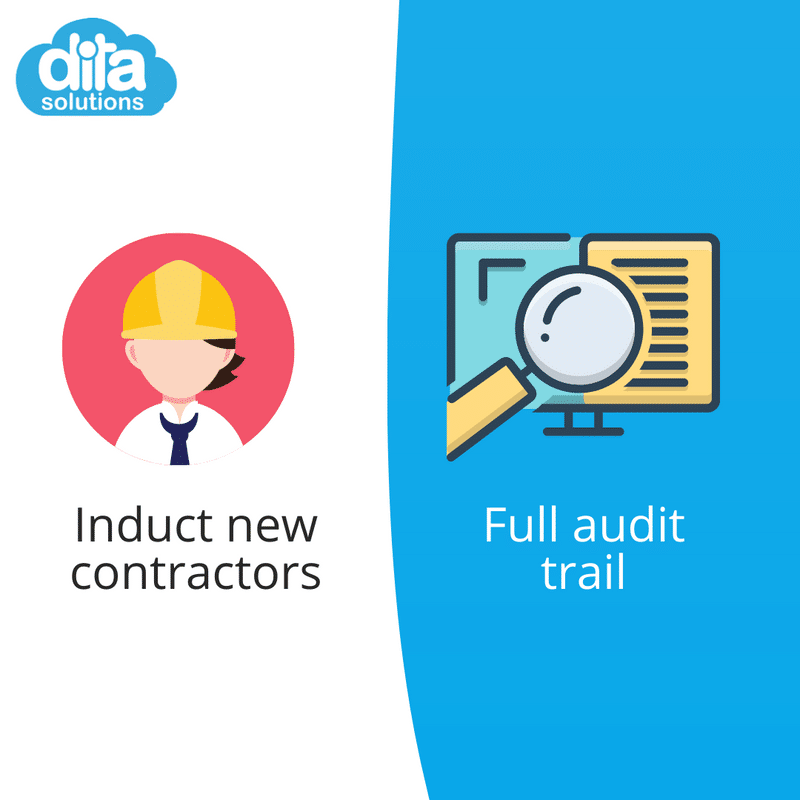
There are several definitions for hazards in your workplace. However, when talking about workplace health and safety we can define a hazard as “any source of potential damage, harm or adverse health effects on something or someone.” Therefore, it is important to know how to identify hazards in your workplace. This is because they pose a very high risk of causing injury to a worker.
Types of Workplace Hazards
Before you complete the task of identifying and handling a hazard, you need to know what you are looking for. Workplace hazards can come in all sorts of variations, and some are potentially more dangerous than others.
A very common way to classify hazards is by the following categories:
- Biological – created by exposure to any biological agents that may result in injury or disease. They are especially prevalent when working in the healthcare industries, but you should never ignore them in any workplace. Hazards can include bacteria, bodily fluids, viruses, human or animal waste, or insect bites, plants, birds and animals
- Chemical – created by the handling or exposure of chemical agents. These could be directly due to the handling of the chemicals, due to vapours, or fire risk. It could also include chemical and toxic properties of the chemical
- Ergonomic – they may not cause immediate injury but can cause long-term problems. Incorrect seating or desk heights, excessive vibrations or regular heavy lifting are possible things to look out for. As well as repetitive movements, improper set up of workstation, etc.
- Physical – can cause harm without the worker coming into direct contact with the hazard. Issues such as high noise levels, extreme temperatures, or radiation fall into this category. It can also include magnetic fields, pressure extremes (high pressure or vacuum), etc.
- Psychosocial/work environment – they are mostly mental health issues that may result from factors in the workplace. Stress due to work demands, harassment, violence, and workplace respect all fit into this category
- Safety – you should completely remove these from the workplace. They are core safety issues such as unsecured cords, worn cabling, unguarded heights and slipping/tripping hazards. They can also include inappropriate machine guarding, equipment malfunctions or breakdowns.

Workplace Hazard Identification
Hazard identification evaluates if any particular situation or item may have the potential to cause harm. The term often used to describe the full process is risk assessment:
- Identify hazards and risk factors that have the potential to cause harm (hazard identification).
- Analyze and evaluate the risk associated with that hazard (risk analysis, and risk evaluation).
- Determine appropriate ways to eliminate the hazard, or control the risk when you cannot eliminate the hazard (risk control).
Overall, the goal of hazard identification is to find and record possible hazards that may be present in your workplace. It may help to work as a team and include both people familiar with the work area, as well as people who are not. This way you have both the experienced and fresh eye to conduct the inspection.
How to Help Prevent Workplace Hazards from Occurring

Preventing a hazard does not happen in one step, rather a series of events over a certain period of time. By developing and implementing a workplace safety plan, this will help to protect staff members at all times.
1 – Develop a Plan: The first step to prevent hazards is to identify them, and the first step in identifying the hazards is to develop a plan that you can implement and follow consistently.
2 – Existing Information: Information that may already be available can help to highlight the hazards and risks associated with features in your workplace. This could include instruction and operating manuals for machinery, chemical safety data sheets (SDS), or reviewing warning labels and signage.
3 – Prior Incidents: It’s likely that your workplace has already suffered accidents in the past. Even if they didn’t result in injury, they can provide valuable insights into the type of hazards that may be present in your workplace.
Analyse prior incident reports, workers’ compensation claims, results of analysis, and reports in both your workplace and related industries. They can be all excellent ways of collecting information on hazards that are already known.
Reporting, Reassessment and Feedback
4 – Diligent Reporting: Collecting information on incidents when they occur will help to build a profile of the types of hazards and risks that are present in your workplace. Reports should document the type of incident, any injuries that were suffered and the contributing hazards or risk factors. they should also include any action that will be taken in the future to mitigate them.
5 – Regular Reassessment: Reporting reactively can only go so far in protecting the workplace. Proactive and regular assessment of the workplace, for instance with weekly walkthroughs, will help to flag both existing and newly developed hazards.
6 – Staff Feedback: This is especially important in industries where the management may not be regularly present in the primary workplace with the highest risk factors, e.g. construction or factory settings. The staff who experience the hazards will likely be the first to notice them. Provide systems to collect and act on quality feedback from staff.
dita Solutions makes the process of identifying, reporting, and reducing hazards in your workplace digital hassle-free and painless. To streamline your business processes, contact us here
